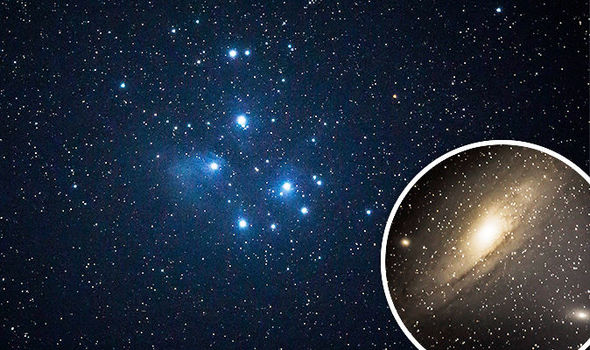
We are not alone! Some planets of Trappist-1 star system can support alien life
Space contains many mysterious things that are still unsolved. Till now the scientists have made many discoveries which inform that humans are not alone, there are also aliens living in the space in some other planets. Now, the scientists from Harvard and Princeton have discovered something new which has added some more information about aliens. As per the new study, there is as stars system, knowns as the Trappist-1 star system and it contains seven earth likes planets which are same like the earth, and all have the atmosphere like earth may host life. It has been estimated that the planets which are orbiting around the Trappist-1 are getting protection from the harmful solar winds, they could support the earth like atmosphere.
The star system is located 39.6 light-years away, and as per the report, it can support human life. It is said that the star is quite larger than Jupiter and has a cold temperature. It is 2000 times lesser than compared to the brightness of the Sun.
It is expected that the Trappist-1 star system has some planets among the seven planets which may consist life. Well, for now, this discovery has created a lot of curiosity among the scientists. They are now investigating more to know about the new Trappist-1 star system. It is now termed as important as it somehow gives a hint about the chance of life outside our Solar system.
As per a study which was published in the Astronomical journal informed that every planet had been lost a larger amount of water than the planet Earth. Earth is the farthest planet in the solar system. Which helps it to get less amount of UV rays from the sun. The newly discovered star system has a suitable environment that can help to grow life there, study says. NASA is now planning to send its rocket to these planets to know there is any life or not.
About the Star: TRAPPIST-1
The planets are orbiting a dwarf star named as Trappist-1. The star is only marginally larger than the Jupiter. The star is very small and cold, and hence the seven orbiting planets are temperate. The star shines very feebly, that is about 2000 times dim; when compared to Sun.
Illustrations so Far:
It is for the first time that so many planets resembling the size of the earth are found together that too around the same star. Since the planets are temperate than there are the chances of availability of water on them. The discovery plays a very important role in determining the possibility of life outside the Earth and our Solar System.
The discovery resembles the news of locating three planets around the same dwarf star that was announced in May 2016; now the difference is just the number has increased to 7.
The size of the planets differs from Earth in the aspect of 10% larger to 25% smaller. According to research, the three outermost planets preferably called as Trappist-1e, 1f and 1g are considered most habitable planets out of the seven that were discovered. However, Trappist-1f gaining the top-notch position even amongst the three. The temperature of this planet is a slight difference on the colder side in comparison to Earth but with ample amount of Greenhouse gases and desired atmosphere.
The planets are only 40 light-years away from the Earth. It is the first ever rocky system in orbit alike our solar system is discovered. However, the news has increased the anxiety in many researchers. Because, in any way, if the life-sustaining system can be successfully determined around Trappist – 1 it will prove to be an award-winning answer to age-old efforts.
Astronomers are analysing the data sent by James Webb Telescope to find the presence of alien life on TRAPPIST-1. “If these planets have atmospheres, the James Webb Space Telescope will be the key to unlocking their secrets,” said Doug Hudgins, Exoplanet Program Scientist at NASA Headquarters in Washington. “In the meantime, NASA’s missions like Spitzer, Hubble, and Kepler are following up on these planets.”
The discovery resembles the news of locating three planets around the same dwarf star that was announced in May 2016; now the difference is just the number has increased to 7.
The size of the planets differs from Earth in the aspect of 10% larger to 25% smaller. According to research, the three outermost planets preferably called as Trappist-1e, 1f and 1g are considered most habitable planets out of the seven that were discovered. However, Trappist-1f gaining the top-notch position even amongst the three. The temperature of this planet is a slight difference on the colder side in comparison to Earth but with ample amount of Greenhouse gases and desired atmosphere.
The planets are only 40 light-years away from the Earth. It is the first ever rocky system in orbit alike our solar system is discovered. However, the news has increased the anxiety in many researchers. Because, in any way, if the life-sustaining system can be successfully determined around Trappist – 1 it will prove to be an award-winning answer to age-old efforts.
Astronomers are analysing the data sent by James Webb Telescope to find the presence of alien life on TRAPPIST-1. “If these planets have atmospheres, the James Webb Space Telescope will be the key to unlocking their secrets,” said Doug Hudgins, Exoplanet Program Scientist at NASA Headquarters in Washington. “In the meantime, NASA’s missions like Spitzer, Hubble, and Kepler are following up on these planets.”


